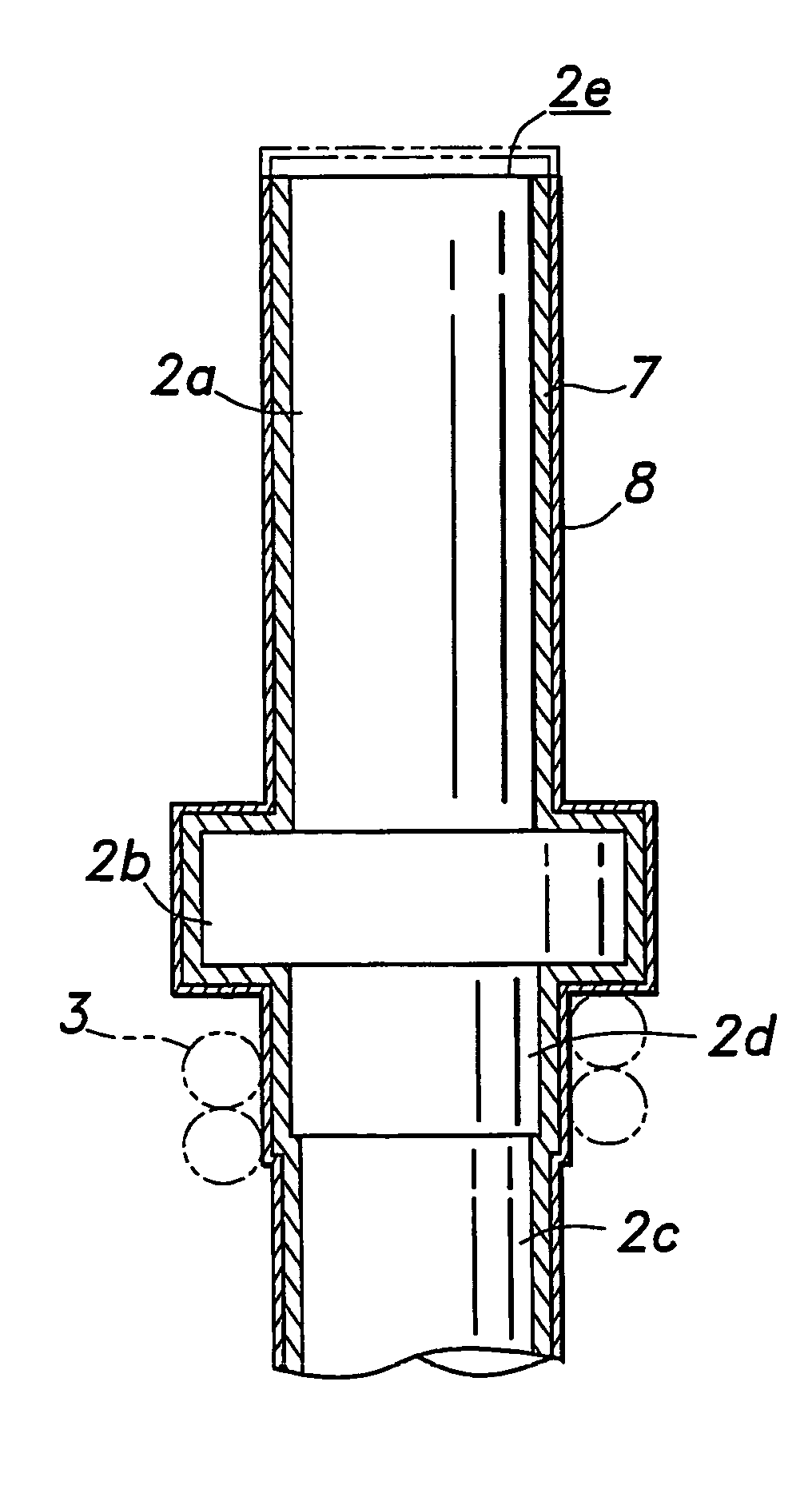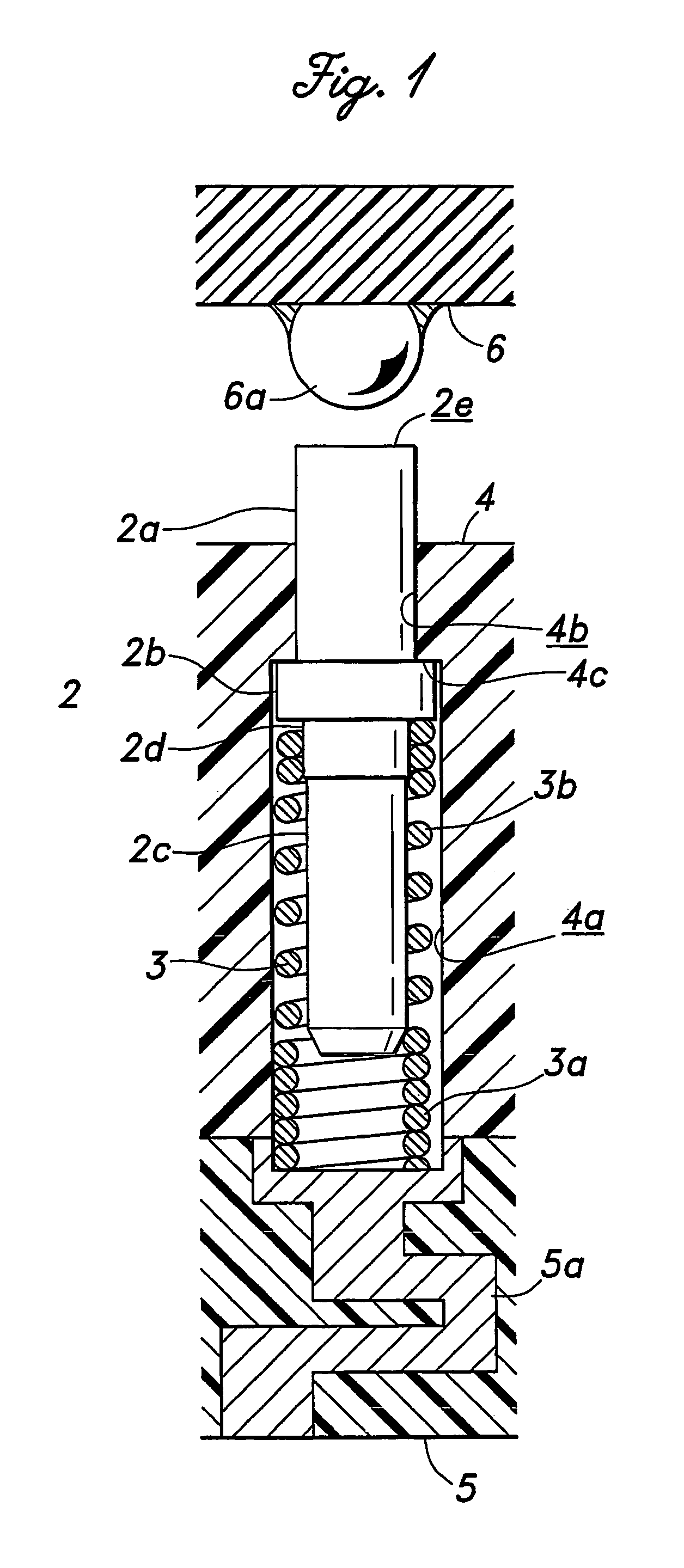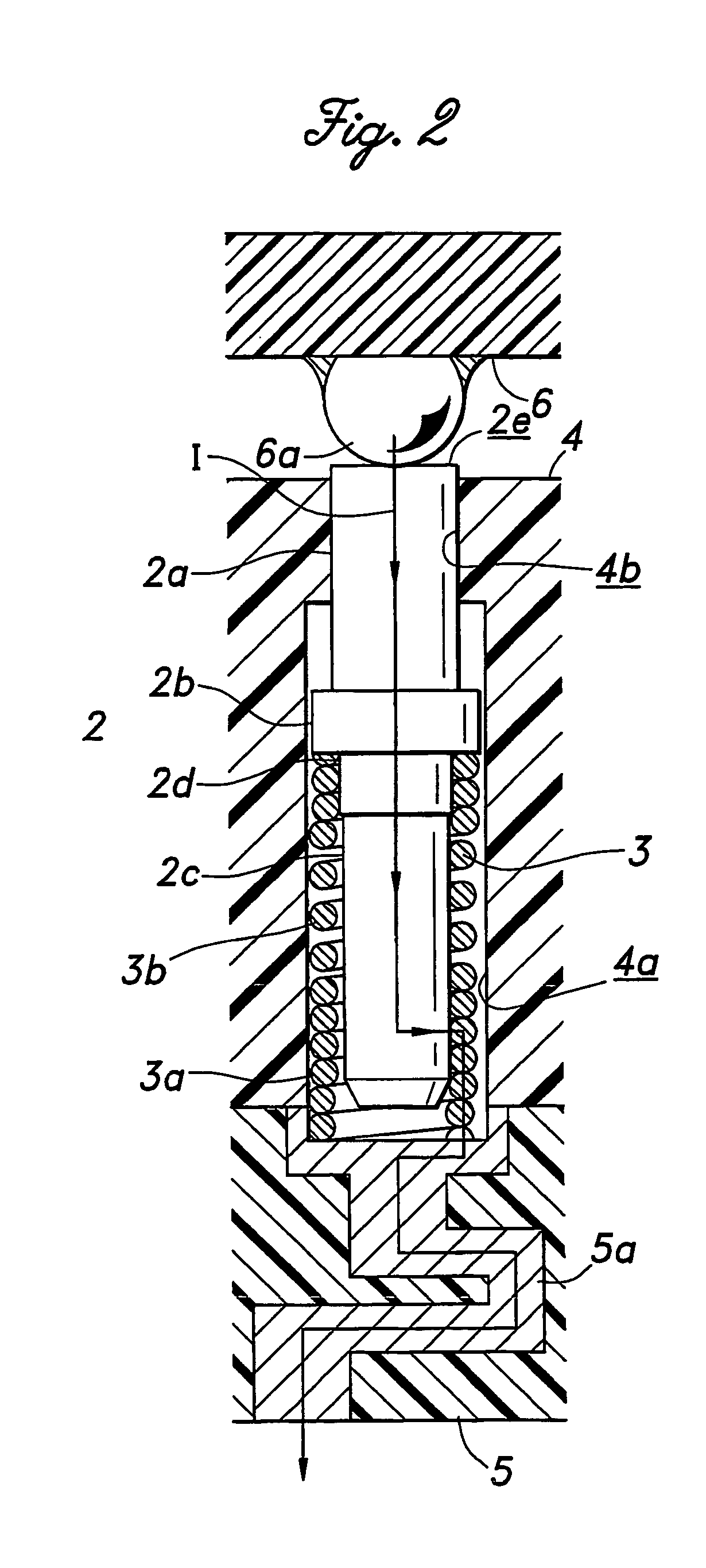Electroconductive contact unit
a contact unit and electroconductor technology, applied in the direction of superimposed coating process, coupling device connection, instruments, etc., can solve the problems of inability to regain original electric property, inability to meet the electric properties of existing needle members made of noble metal alloys, and inability to meet the electric properties of existing needle members. to achieve the effect of high hardness and wear resistance, high durability, and high electroconductivity of the electric path between the needle member and the coil spring
- Summary
- Abstract
- Description
- Claims
- Application Information
AI Technical Summary
Benefits of technology
Problems solved by technology
Method used
Image
Examples
Embodiment Construction
[0019]Preferred embodiments of the present invention are described in the following with reference to the appended drawings.
[0020]FIG. 1 is a vertical sectional view showing an electroconductive contact unit 1 for use in a contact probe embodying the present invention. This electroconductive contact unit 1 may be used by itself, but is particularly suitable for use in a holder (probe head) of a multipoint contact probe as one of a large number of similar electroconductive contact units that are arranged one next to another, for instance for a wafer level test. In such a contact probe, the holder is integrally attached to a board mounted on a testing machine via a relay circuit board. The drawing is for illustration purpose only, and the actual aspect ratio may differ from that of the illustrated example.
[0021]The electroconductive contact unit 1 comprises an electroconductive needle member 2, a compression coil spring 3 and a holder 4 made of electrically insulating material and def...
PUM
| Property | Measurement | Unit |
|---|---|---|
| hardness | aaaaa | aaaaa |
| wear resistance | aaaaa | aaaaa |
| electroconductive | aaaaa | aaaaa |
Abstract
Description
Claims
Application Information
 Login to View More
Login to View More - R&D
- Intellectual Property
- Life Sciences
- Materials
- Tech Scout
- Unparalleled Data Quality
- Higher Quality Content
- 60% Fewer Hallucinations
Browse by: Latest US Patents, China's latest patents, Technical Efficacy Thesaurus, Application Domain, Technology Topic, Popular Technical Reports.
© 2025 PatSnap. All rights reserved.Legal|Privacy policy|Modern Slavery Act Transparency Statement|Sitemap|About US| Contact US: help@patsnap.com



